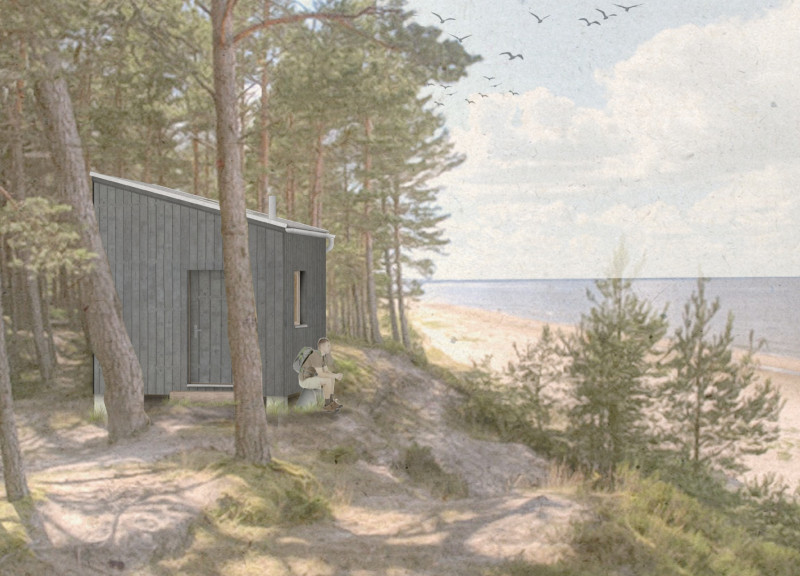5 key facts about this project
The design presents a compact and flexible space tailored to accommodate various user needs while fostering a natural atmosphere. Located in Latvia, the structure efficiently utilizes local resources and is intended to serve as a functional living area that balances privacy with communal interaction. The design concept revolves around making the best use of limited space to support different activities within one environment.
Spatial Configuration
The approach focuses on "space-saving," ensuring that every cubic meter is dedicated to specific functions. The layout features a sleeping area with individual beds, allowing for some privacy while encouraging social engagement in the shared spaces. The design elevates these beds to optimize storage, which is essential in a compact living scenario. This clever arrangement creates an inviting area that adheres to human scale and everyday living needs.
Sustainable Practices
Sustainability is a key aspect of the design, prominently seen in the choice of materials. Locally sourced pine is used for construction, connecting the building to the region. The exterior is clad in charred pine siding, which provides durability and protects against UV damage, thus reducing the need for upkeep. Inside, OSB panels are utilized for their structural integrity and thermal properties. These materials work together to create a comfortable living environment throughout the changing seasons.
Functional Utilities
To enhance livability, the design incorporates practical utilities that support everyday functions. Solar panels are installed to generate electricity for lighting and outlets, allowing for a more independent lifestyle. A rainwater harvesting system efficiently manages water use, while a wood-burning stove adds warmth and cooking capabilities. These features reflect a dedication to practical sustainability, making the living space both functional and efficient.
Flexibility and Adaptability
Movable furniture elements, such as stools and a collapsible table, enable a variety of social interactions and activities. This focus on flexibility allows occupants to adjust the space according to their preferences, whether for shared meals, games, or simply relaxing. Such design details ensure that the environment can adapt to different needs, fostering a sense of community among users and enhancing the overall living experience.


























